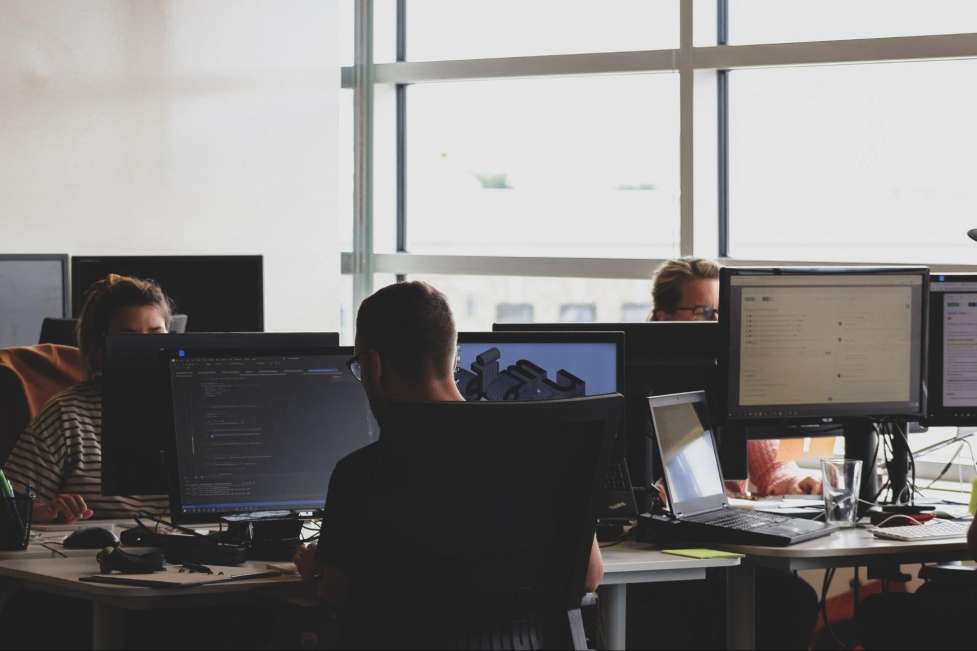

Hazel
A freelance writer is interested in tech, legal, health, and property trends. When she's not writing, she works in commercial property management
The COVID-19 pandemic certainly ushered in a transformative (to say the least) era in the world of work, fundamentally altering the way businesses operate and employees perform their duties. As the world emerged from such an all-encompassing crisis and attempted to return to some version of normalcy, a new paradigm emerged: the hybrid work model.
The hybrid work model is an innovative approach to work, one that blends elements of remote work with traditional in-office tasks, and offers up a new level of flexibility to employees. What’s more, this transition is proving to be far more than a temporary response to a global crisis; it’s a profound shift in how we fundamentally think about work, not to mention work and life balance.
As a consequence to such immense change, businesses are now reevaluating and redefining office spaces to meet the evolving needs of their workforce. So just what is this rising trend of hybrid work all about, and why is its impact on the traditional office space so profound?
The Rise of Hybrid Work

Frequently touted as the "future of work" (though that future appears to be now), hybrid work has gained significant traction due to its potential to enhance employee satisfaction, increase productivity, and improve retention rates, all in one fell swoop.
Hybrid work arrangements come in various forms, allowing companies to tailor their strategies to suit specific needs; some organizations enable employees to choose their work location on a daily or weekly basis, while others adopt fixed schedules for remote and in-office work.
Regardless of the particular approach, however, one central theme prevails: the necessity for adaptable office spaces designed to cater to a more fluid workforce - and herein lies the impact of hybrid work on the traditional office.
Vacant Office Spaces
This monumental shift in employee preferences has tangible repercussions for traditional office environments. For example, a recent report published by CNN revealed that 50% of the world’s biggest companies plan to reduce their office spaces, with US cities seeing the biggest impact.
Across urban landscapes, empty cubicles and unoccupied conference rooms are becoming increasingly common sights. Alex Coffman - Co-Owner of Teifke Real Estate - believes this may be due to “Companies, attuned to the changing tides of work dynamics, actively downsizing their real estate portfolios in response to reduced demand for physical office presence,”.
Adapting to a New Normal
For many organizations, the pandemic served as a catalyst for reevaluating the necessity of expansive office spaces. As remote work proved its viability, the once-unthinkable concept of a remote-first or hybrid work model gained traction. This paradigm shift has necessitated a reevaluation of real estate investments, as businesses look to optimize their physical footprints in alignment with the rapidly changing needs of their workforce.
Economic Imperatives
While flexibility alone is a tremendous benefit in many ways, the decision to downsize office spaces is not solely based on it; the economic imperatives are clear, including reduced leasing expenses, utility bills, and more. In an era marked by such economic uncertainty, savings like these have taken on a newfound importance, enabling companies to allocate resources much more strategically.
The Evolution Continues
As the goal posts continue to move and companies carry on redefining their real estate needs, we witness an ongoing evolution of the workplace. Office spaces are transforming from static, underutilized environments into agile hubs that adapt to the ebb and flow of a hybrid workforce. This evolution is not a regression but rather a progression, aligning the workplace with the changing dynamics of work in the 21st century.
Redefining Office Spaces for a Hybrid Workforce
Many changes are afoot, designed to empower employees to customize their workspace based on their unique needs and preferences, as well as enhance the employee experience; fostering greater in-office collaboration and creativity is another clear goal:
Flexible Office Layouts
Traditional office layouts are giving way to more flexible and dynamic designs, with cubicles making way for open floor plans, modular furniture, and adaptable hot-desking arrangements.
Collaborative Spaces
Offices are transforming before our very eyes, morphing into exciting hubs focused on collaboration, innovation, and team-building activities. Dedicated collaborative spaces equipped with state-of-the-art technologies are also being incorporated into office designs with an eye to facilitating more productive in-person meetings and brainstorming sessions.
Hybrid Technology Infrastructure
Robust technology infrastructure is essential to support hybrid work; investments in high-quality video conferencing equipment, virtual meeting platforms, and digital collaboration tools all help to ensure remote and in-office employees can seamlessly connect and work together efficiently.
Augmented Reality (AR) Collaboration

Some forward-thinking companies are experimenting with AR tools to enhance remote collaboration; including software and hardware solutions that enable employees to feel as though they are in the same room, fostering more immersive teamwork experiences.
For example, Mark Zuckerberg recently demonstrated the Metaverse platform’s ability to scan, encode and transmit photo-realistic images of subjects in real-time. Allowing for entirely virtual interviews and face-to-face interactions. Combining this technology with AR and collaborative document editors could help businesses recreate realistic office spaces in fully virtual worlds.
AI-Driven Workplace Analytics
Artificial intelligence is being used to gather data on employee work patterns and productivity; this data helps companies fine-tune their hybrid work strategies, ensuring that employees have the resources and support they need.
Virtual Reality (VR) for Training
VR is being utilized for employee training and onboarding, providing a realistic and interactive learning environment regardless of the user’s physical location - making it especially valuable for remote employees.
Enhanced Amenities
To entice employees back to the office, many businesses are enhancing their workplace amenities. Gyms, cafes, wellness rooms, and outdoor spaces are becoming standard features
Reimagining Communal Spaces
Communal areas such as kitchens, breakrooms, and lounges are being reimagined to promote social interactions and team bonding. Designed to be inviting and functional, these spaces encourage employees to take breaks, collaborate, and connect with their colleagues.
Hub-and-Spoke Models
Some companies are adopting hub-and-spoke models, establishing multiple smaller office locations rather than a single central headquarters. This approach reduces commuting times for employees, provides a physical presence in different regions, and supports a more distributed workforce.
Health and Safety Measures
In light of the ongoing pandemic, businesses are prioritizing health and safety in office spaces. Improved ventilation systems, touchless technology, and increased sanitization protocols are top of the list, ensuring the well-being of employees, and assuring them that their workplace is a safe environment.
Global Perspectives

The adoption of hybrid work is not limited to a specific region or culture; on the contrary, it has gained traction worldwide, albeit with variations in implementation and cultural nuances.
Cultural Differences
Different cultures have varying expectations and norms regarding work. Companies operating globally must consider cultural differences when implementing hybrid work policies to ensure they align with local customs and preferences.
Regulatory Variations
Regulatory environments differ across countries, affecting how hybrid work is structured. Companies must stay informed regarding the legal requirements and employment regulations specific to each region in which they operate - no room for taking their eye off the ball.
Remote Work Challenges in Diverse Environments
In regions with limited access to technology or challenging work-from-home conditions, companies are finding creative solutions to support their remote employees, such as providing alternative workspaces or technological resources.
This can be seen, for example, in the growing popularity of coworking spaces. Under this model, a single location is equipped with multiple office spaces tailored to suit various needs, including individual cubicles, shared workspaces and meeting rooms. Staff book work slots as and when required, with all the equipment needed to perform their roles supplied and managed on-site.
Future Trends
AI-Driven Offices
AI is being leveraged to create intelligent offices that adapt to employee preferences, automate routine tasks, and enhance the workplace experience.
Remote Work Legislation
As hybrid work becomes the norm, governments are considering legislation to regulate remote work, including issues related to work hours, compensation, and employee rights.
New Technologies
Technologies, such as 5G, edge computing, and the Internet of Things (IoT), are expected to further transform the hybrid work landscape, thus enabling seamless connectivity and improved remote collaboration.
These future trends highlight the ongoing evolution of hybrid work and the need for businesses to stay agile and adaptable in the face of constant change.
New Work Paradigm Here to Stay
Hybrid work. As forward-thinking companies continue to embrace this new work paradigm, the real estate industry will inevitably continue to play a pivotal role in shaping the offices of the future. Adaptable office spaces that prioritize employee well-being, collaboration, and productivity will be essential in this evolving landscape.

About the author
Hazel
A freelance writer is interested in tech, legal, health, and property trends. When she's not writing, she works in commercial property management
Related articles


